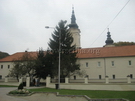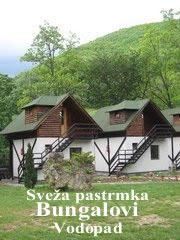Fruska Gora Monasteries
There are 16 Serbian Orthodox monasteries located on Fruska Gora mountain. Legends, place their founding to the period between the 12th and 15th centuries. According to historical data, most of them were constructed in the late middle ages when Serbs fleeing north from Turkish incursion. In the course of centuries of their existence, these monasteries sustained the spiritual and political life of the Serbian nation.
BEOCIN MONASTERY
 The time of founding Beocin monastery, near the village of the same name, is unknown. It is first mentioned in Ottomans records dated in 1566/1567. Monastery was rebuilt by monks fleeing the Raca Monastery in the south. The monastery as it is seen today had its construction started in 1732 with the placing of the church's baroque dome being done in the end of 18.century.
The time of founding Beocin monastery, near the village of the same name, is unknown. It is first mentioned in Ottomans records dated in 1566/1567. Monastery was rebuilt by monks fleeing the Raca Monastery in the south. The monastery as it is seen today had its construction started in 1732 with the placing of the church's baroque dome being done in the end of 18.century.
KRUSEDOL MONASTERY
Krusedol is one of the most significant monasteries on Fruska Gora The monastery is the legacy of the last Serbian despot family of Brankovićc. It was built between 1509 and 1514. The whole family including the last Serbian despot, were buried in here.
JAZAK MONASTERY
The Jazak Monastery is one of the most visited monasteries on Fruska Gora. It is located 5km from Vrdnik. Jazak was built in 1736 and the architectural entity is comprised of the church of St. Trinity. Not far from the present one, remains of the Old Vrdnik built in 16th century  are to be found.
are to be found.
The style of construction, with mixing of the layers of plaster, stone, and a range of arcades lacing the temple, remind of the Serbian Moravska School architecture.
The monastery has a wealth of treasure and valuable icons located behind high protective walls.
MONASTERY VRDNIK
The Vrdnik Monastery was built in the 16th century. Like others Serbian monasteries, it subsequently destroyed by invading  Turks and then rebuilt in the 17th century when monks from the southern Ravanica Monastery escaped from Ottomans north to settle in Vrdnik. They brought with them the remains of Holy Duke Lazar, who perished in the epic battle at Kosovo Polje in 14.century.
Turks and then rebuilt in the 17th century when monks from the southern Ravanica Monastery escaped from Ottomans north to settle in Vrdnik. They brought with them the remains of Holy Duke Lazar, who perished in the epic battle at Kosovo Polje in 14.century.
The larger church was built in 1811. Vrdnik was heavily damaged in World War II. It underwent extensive reconstruction between 1987 and 1990.
It is situated in Vrdnik spa in the Fruska Gora mountain.





